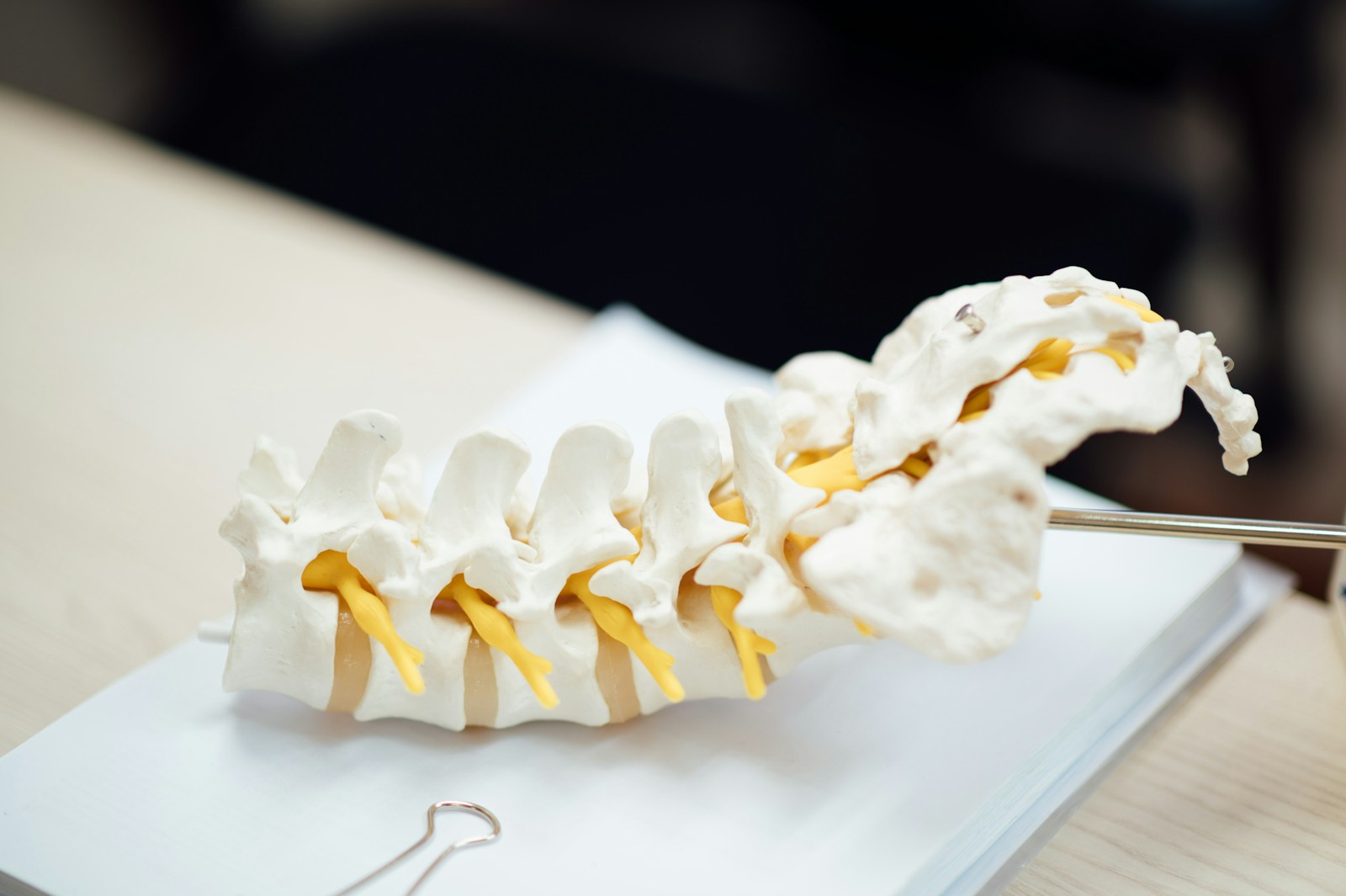The recovery period following a Minimally Invasive Lumbar Decompression procedure is a critical component of the patient’s overall healing process. While this technique generally promises a shorter recovery time, the actual duration can vary substantially depending on a multitude of factors including the patient’s general health, age, and adherence to post-operative care guidelines. A deeper exploration into these factors can help healthcare professionals to optimize post-operative care and help patients to set realistic expectations for their recovery timeline.
Understanding Lumbar Decompression
While it is a complex medical procedure, lumbar decompression, fundamentally, is a minimally invasive surgical technique aimed at relieving pressure on one or many pinched nerves in the lower spine. The procedure involves the removal or reshaping of parts of vertebrae, hence reducing the pressure on spinal nerves. Understanding lumbar anatomy basics aids in comprehending the necessity of such a procedure.
The lumbar region, or lower back, consists of five vertebrae (L1-L5). These vertebrae are the largest unfused vertebrae in the spine, enabling them to support much of the body’s weight but also making them the most likely to suffer from wear and tear. Each vertebra is separated by an intervertebral disc, which acts as a shock absorber. When these discs degenerate, they can compress the nerves, causing pain and other symptoms.
Decompression alternatives exist for patients who may not be suitable candidates for surgery or prefer a less invasive approach. These include physical therapy, pain management techniques, lifestyle modifications, and medications. However, these alternatives may not provide the same level of relief as surgical decompression. The choice of decompression method largely depends on the patient’s specific condition, overall health, and personal preference.
Minimally Invasive Approach Benefits
The benefits of a minimally invasive approach to lumbar decompression are manifold, offering patients shorter hospital stays, reduced post-operative pain, and a quicker return to normal activities. Approach comparisons with traditional open surgery reveal substantial disparaties, particularly in recovery time and patient comfort.
When examining these benefits, the following stand out:
- Speedy recovery: The minimally invasive techniques typically lead to faster recovery times, allowing patients to return to their daily activities much sooner. Such recovery disparaties are critical, particularly for patients with work or family obligations.
- Reduced hospital stay: Given the less invasive nature of the procedures, hospital stays are notably reduced, translating into lower healthcare costs and less disruption to the patient’s lifestyle.
- Less post-operative pain: Patients often report less pain following minimally invasive procedures, which can decrease reliance on pain medication and its potential side effects.
- Minimized tissue damage: This approach typically involves smaller incisions, reducing the trauma to surrounding tissues and resulting in less scarring.
These advantages make the minimally invasive approach an attractive option for patients requiring lumbar decompression. The focus shifts from merely surviving the surgery to improving the overall quality of the patient’s post-operative life.
The Actual Procedure Explained
To gain a thorough understanding of the minimally invasive lumbar decompression procedure, it is necessary to familiarize oneself with the specific steps involved in the surgery. This discussion will focus on explaining the process in a detailed and accessible manner. From pre-operative preparations to the intricacies of the actual procedure, we aim to provide a clear and professional explanation.
Understanding the Procedure
Undergoing a minimally invasive lumbar decompression involves a series of intricate steps, each designed to alleviate the pressure on the spinal nerves and reduce lower back pain. This procedure, while beneficial, does come with certain procedure risks and it’s important to understand these before proceeding.
It’s also vital to be aware of the surgery alternatives available. These include:
- Non-surgical treatments such as physiotherapy and pain management
- Lifestyle modifications including weight loss and regular exercise
- Medications to manage pain and inflammation
- Alternative therapies like acupuncture and chiropractic care
The aim of this procedure is not just to alleviate pain, but also to improve your overall quality of life. Therefore, understanding the procedure and its potential risks, as well as exploring alternatives, is essential to making an informed decision.
Decompression Surgery Steps
In the domain of spinal surgeries, the minimally invasive lumbar decompression procedure unfolds in a series of meticulous steps, each tailored to relieve pressure on spinal nerves and mitigate lower back pain. The critical first step is surgery preparation, which involves stringent preoperative assessments to evaluate the patient’s health condition. This guarantees that the patient is fit for the procedure. On the day of the surgery, anesthesia options are discussed. The chosen anesthesia, typically general or spinal, is administered to ensure patient comfort. The surgeon then makes a small incision in the lower back, introduces dilators and a tubular retractor to access the spine. The pressure is released from the nerves by removing bone or disc material, thereby alleviating pain.
Post-Surgery: Immediate Aftercare
Following a minimally invasive lumbar decompression procedure, immediate aftercare is an important aspect of recovery that includes two primary considerations: immediate pain management and mobility restrictions post-surgery. Pain management is a key element, ensuring patient comfort while preventing potential complications. Additionally, understanding and adhering to mobility restrictions is essential for best recovery and mitigating the risk of post-surgical complications.
Immediate Pain Management
Once the minimally invasive lumbar decompression surgery is completed, effective pain management becomes a critical aspect of immediate aftercare. The initial post-operative pain can be efficiently managed through a balance of conventional pain medication options and alternative pain relief methods.
Here are some potential strategies for immediate post-surgery pain management:
- Administering prescribed pain medications: This can include opioids, non-steroidal anti-inflammatory drugs (NSAIDs), or acetaminophen.
- Implementing alternative pain relief measures: Techniques like guided imagery, deep breathing exercises, and meditation can help manage pain.
- Encouraging controlled movement: While avoiding any strain on the back, gentle movement can enhance blood flow and aid in pain relief.
- Regular monitoring: Frequent check-ups and assessments make sure that the pain is under control and recovery is on track.
Mobility Restrictions Post-Surgery
Alongside effective pain management post-surgery, proper handling of mobility restrictions plays a substantial role in the immediate aftercare and recovery process after a minimally invasive lumbar decompression procedure. Patients are typically advised to limit certain movements and activities to avoid surgical complications and optimize healing. These restrictions, depending on the individual’s condition, may include avoiding heavy lifting, strenuous activities, or certain sitting or bending postures.
In addition to these, a recovery diet rich in proteins and vitamins, coupled with adequate hydration, can contribute significantly to wound healing and tissue regeneration. Remember, complying with these guidelines not only hastens recovery but also minimizes the risk of postoperative complications. Consult with your healthcare provider for a personalized recovery plan.

Hospital Stay Duration
The duration of a patient’s stay in the hospital post minimally invasive lumbar decompression surgery is a crucial aspect to ponder upon for both the patient and their caregivers. This duration encompasses various components, including the quality of hospital amenities and the extent of insurance coverage.
Several factors that influence the duration of the hospital stay include:
- Patient’s Health Status: The overall health condition of the patient, including their age, fitness level, and presence of comorbidities, can greatly impact the length of hospitalization.
- Surgical Complications: Any postoperative complications may require an extended stay for monitoring and treatment.
- Hospital Amenities: The availability and quality of postoperative care, rehabilitation services, and pain management programs can affect the length of stay.
- Insurance Coverage: The extent of patients’ insurance coverage may also determine the duration of their hospital stay, with longer stays potentially incurring higher out-of-pocket costs.
Understanding these factors can help patients and caregivers prepare for the hospital stay following minimally invasive lumbar decompression surgery. It is essential to discuss these considerations with the healthcare team to promote recovery and minimize potential stressors.
Home Recovery Timeframe
Shifting to home-based recovery, patients should anticipate a variable timeframe that hinges on several factors including their individual health status, adherence to postoperative guidelines, and access to quality home care services. The duration of recovery at home can range from a few weeks to several months.
Home modifications can greatly aid in the recovery process. These can include moving the bedroom to the ground floor to minimize stair usage, installing grab bars in the bathroom, and using raised toilet seats. Proper adjustments can help to prevent falls, unnecessary strain, and facilitate an independent daily routine, thereby boosting morale and speeding up recovery.
Diet alterations also play an essential role in recovery. A balanced diet rich in protein, fiber, and essential nutrients can aid in wound healing, muscle recovery, and boost overall health. Hydration is equally important, and patients are advised to drink plenty of fluids unless otherwise directed by their healthcare provider.
Patients should also be prepared for a degree of discomfort during the recovery period. Pain management, as advised by the healthcare provider, is vital. Patients should strictly follow their medication schedule and promptly report any abnormal symptoms or complications for immediate medical intervention.
Physical Therapy and Rehabilitation
Embracing a thorough physical therapy and rehabilitation program is vital in the postoperative period following minimally invasive lumbar decompression, as it can greatly enhance mobility, strength, and overall recovery. The goal of such a program is not only to restore function but also to educate patients about their condition and how to prevent future injuries.
Key components of this rehabilitation process include:
- Utilizing Therapy Equipment Essentials: These include exercise balls, resistance bands, and balance boards. These tools aid in improving flexibility, strength, and stability, thereby speeding up the recovery process.
- Rehabilitation Diet Importance: A well-balanced diet rich in proteins, vitamins, and minerals can significantly expedite tissue healing and reduce inflammation.
- Regular Exercise Regime: A carefully curated set of exercises can help regain strength and flexibility in the back muscles, thereby improving posture and reducing pain.
- Patient Education: Knowledge about the condition, the healing process, and prevention of future injuries is vital for a successful and sustained recovery.
Adherence to these steps can ensure a faster return to normal activities, better pain management, and a reduced risk of future complications. A thorough physical therapy and rehabilitation program plays a pivotal role in helping patients regain their previous level of function and lead a pain-free life.
Returning to Work: Expectations
The process of returning to work after undergoing a minimally invasive lumbar decompression can vary greatly due to individual circumstances and job requirements. It is important to understand that post-operative work adjustments may be necessary and physical limitations may impact the nature of tasks performed. Additionally, the role of the employer in facilitating a smooth change back to work and supporting recovery should not be underestimated.
Post-Operative Work Adjustments
Managing the shift back to work after a minimally invasive lumbar decompression procedure requires careful planning and realistic expectations regarding physical limitations and overall recovery time. Workplace ergonomics become critical during this period, ensuring a conducive work environment that promotes healing while reducing the risk of reinjury. At the same time, emotional wellbeing plays a pivotal role in recovery, with the right support system and mindset making a significant difference.
The following are key aspects to take into account during post-operative work adjustments:
– Implementing workplace ergonomic adjustments to reduce strain on the lumbar area
– Ensuring emotional wellbeing through stress management and counseling if needed
– Gradually increasing work hours, starting with part-time if possible
– Planning for regular breaks to rest and perform light physical exercises.
Physical Limitations Impact
Traversing the physical limitations post-surgery greatly impacts the expectations of returning to work, requiring a thorough understanding of the patient’s capacity and the nature of their job responsibilities. Following a minimally invasive lumbar decompression, the individual might experience restricted mobility, necessitating modifications in their work environment or tasks. Emotional readiness is another critical factor influencing the shift back to work. Patients must be psychologically prepared to handle the physical challenges and potential discomfort associated with resuming professional duties. Simultaneously, dietary changes can assist in expediting the recovery process. A balanced diet rich in essential nutrients aids in tissue repair, enhancing the body’s healing capacity. Ultimately, the patient’s readiness to confront these physical limitations greatly shapes their return-to-work expectations.
Employer’s Role in Recovery
Acknowledging the pivotal role they play in a patient’s recovery, employers can facilitate a smoother shift back to work post minimally invasive lumbar decompression surgery. A supportive workspace and a clear return to work policy are critical in this process.
- Creating a supportive workspace: This could mean adjusting workstation ergonomics or modifying work duties temporarily to accommodate the recovering employee.
- Developing a return to work policy: This policy should outline expectations, potential adjustments, and a timeline for the employee’s full return.
- Communication: Regular check-ins can help track the employee’s progress and address any concerns promptly.
- Access to rehabilitation: Employers might consider facilitating access to physical therapy sessions during work hours.

Lifestyle Modifications for Recovery
What lifestyle adjustments should one consider for a best recovery following a minimally invasive lumbar decompression surgery? Two important factors to focus on are dietary changes and maintaining mental wellness.
Dietary changes are essential to promote healing and manage inflammation post-surgery. A diet rich in protein, vitamins, and minerals can expedite the recovery process. Incorporating foods like lean meats, fruits, vegetables, and whole grains can provide the necessary nutrients for tissue repair and overall health. Additionally, maintaining hydration is key to preventing constipation, a common side effect of some pain medications.
Mental wellness is equally crucial during the recovery phase. Stress and anxiety can greatly hinder the healing process, as they can lead to muscle tension and pain. Therefore, patients should explore stress management techniques such as mindfulness, meditation, or gentle yoga, with the guidance of a healthcare professional. Keeping a positive outlook, staying socially connected, and getting adequate rest can also contribute to mental wellness.
Potential Complications Post-Procedure
Despite the considerable benefits of minimally invasive lumbar decompression surgery, it is important to be aware of potential complications that may arise post-procedure. This awareness facilitates proactive measures for infection prevention and effective scar healing, thereby ensuring a safer recovery period.
The complications can be categorized into the following:
- Infection: The surgical site may become infected, requiring antibiotics or further treatment. Adherence to infection prevention protocols can greatly reduce this risk.
- Bleeding: Though rare, excessive bleeding post-surgery can necessitate additional interventions.
- Nerve Injury: There’s a minimal chance that nerves may be damaged during surgery, potentially causing weakness, numbness, or pain.
- Scar tissue formation: While scar formation is part of the healing process, excessive scar tissue can cause discomfort and impede recovery.
Detailed knowledge about these complications allows for early detection and intervention. It’s essential to follow all post-op instructions and maintain regular follow-ups with your healthcare provider. Remember, the goal of minimally invasive lumbar decompression surgery is to enhance your quality of life. Awareness of potential complications post-procedure ensures you are well-equipped to achieve this goal.
Tips for a Speedy Recovery
Embracing a structured recovery plan can greatly expedite the healing process after minimally invasive lumbar decompression surgery. The first pillar of a successful recovery strategy is sound nutrition advice. Consuming a balanced diet rich in protein, vitamins, and minerals can greatly aid in tissue regeneration and wound healing. Additionally, staying well-hydrated can also alleviate common post-surgical symptoms such as constipation and fatigue.
The second pillar is mental wellness. It’s important to understand that recovering from surgery is not only a physical journey but a mental one as well. Patients may experience feelings of anxiety or depression during this time. Hence, incorporating relaxation and stress management techniques such as meditation, breathing exercises, or even therapy can be very beneficial.
Regular follow-up appointments with your healthcare provider are also essential. They can monitor your progress, adjust your treatment plan if necessary, and address any concerns or complications promptly.
Lastly, be patient and kind to yourself. Every person’s recovery journey is unique and it’s important to not rush the healing process. This holistic approach to recovery will not only speed up your healing time but also enhance your overall well-being post-surgery.
Frequently Asked Questions
Does Health Insurance Cover Lumbar Decompression Surgery and Subsequent Recovery Treatment?
Yes, health insurance typically covers lumbar decompression surgery and subsequent recovery treatment. However, coverage may vary due to insurance limitations and it’s advisable to anticipate potential out-of-pocket expenses. Always consult your insurance provider for specifics.
How Does the Weather Affect Recovery From Minimally Invasive Lumbar Decompression?
Weather sensitivity can influence recovery post-surgery. Cold, damp conditions may exacerbate discomfort, while warmer weather could enhance healing. Therefore, seasonal impacts are significant considerations for recovery from minimally invasive lumbar decompression.
Are There Any Dietary Restrictions or Recommendations During the Recovery Period?
During the recovery period, maintaining proper nutrition is essential. Hydration importance cannot be overstated, and consumption of protein-rich foods is recommended to aid tissue repair. However, specific dietary restrictions should be discussed with your healthcare provider.
Can I Travel Long Distances During the Recovery Period After Lumbar Decompression?
Travel logistics post surgery can be complex. Long distance travel may strain mobility and potentially delay healing. It’s advisable to discuss travel plans with your healthcare provider to guarantee a safe and smooth recovery.
What Impact Does Minimally Invasive Lumbar Decompression Have on Mental Health During Recovery?
Minimally invasive lumbar decompression can influence mental health during recovery. Emotional resilience is crucial as patients may face stress. Adequate stress management strategies can mitigate anxiety or depression, promoting a healthier and more efficient recovery process.

